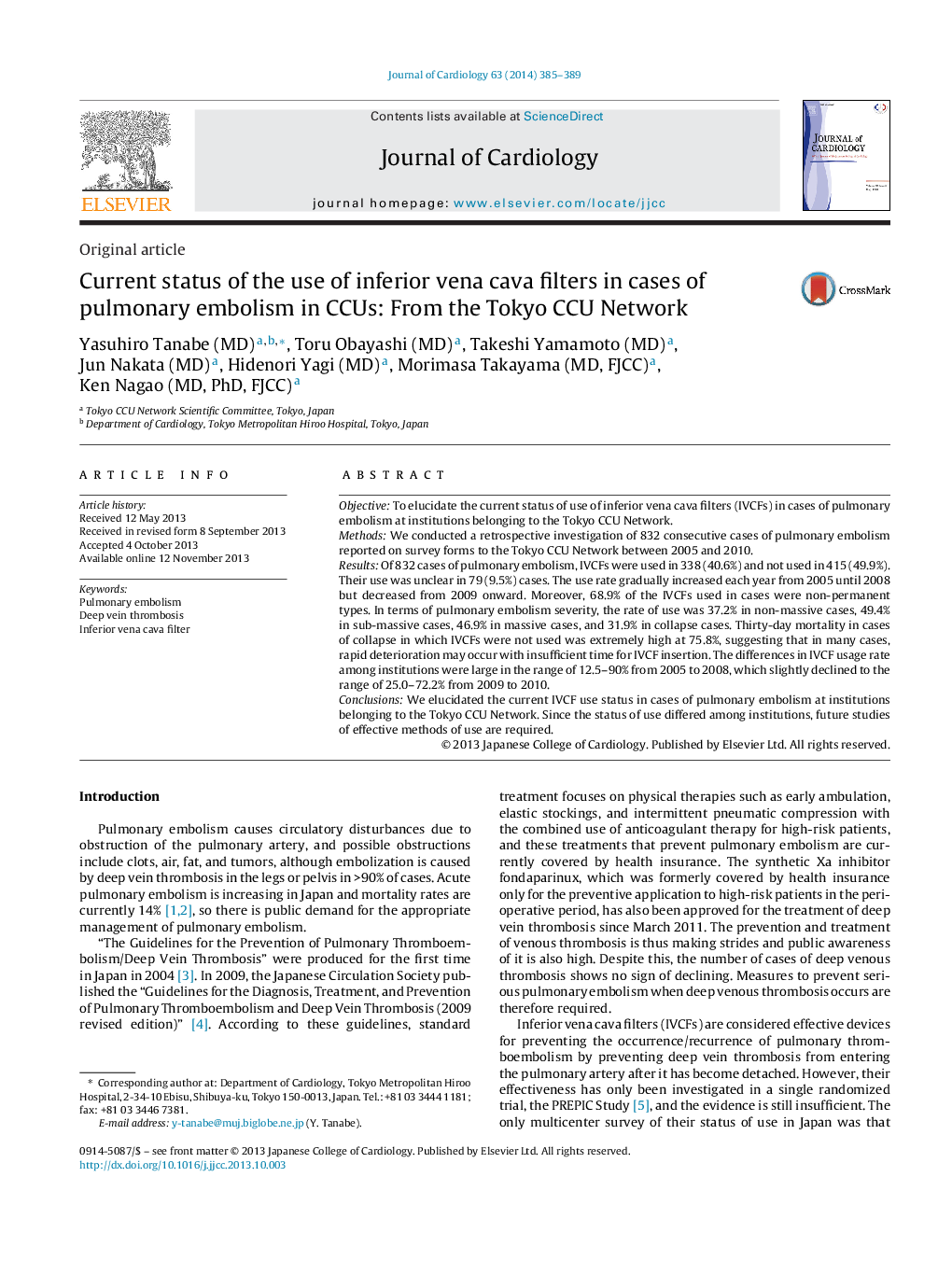| Article ID | Journal | Published Year | Pages | File Type |
|---|---|---|---|---|
| 2963044 | Journal of Cardiology | 2014 | 5 Pages |
ObjectiveTo elucidate the current status of use of inferior vena cava filters (IVCFs) in cases of pulmonary embolism at institutions belonging to the Tokyo CCU Network.MethodsWe conducted a retrospective investigation of 832 consecutive cases of pulmonary embolism reported on survey forms to the Tokyo CCU Network between 2005 and 2010.ResultsOf 832 cases of pulmonary embolism, IVCFs were used in 338 (40.6%) and not used in 415 (49.9%). Their use was unclear in 79 (9.5%) cases. The use rate gradually increased each year from 2005 until 2008 but decreased from 2009 onward. Moreover, 68.9% of the IVCFs used in cases were non-permanent types. In terms of pulmonary embolism severity, the rate of use was 37.2% in non-massive cases, 49.4% in sub-massive cases, 46.9% in massive cases, and 31.9% in collapse cases. Thirty-day mortality in cases of collapse in which IVCFs were not used was extremely high at 75.8%, suggesting that in many cases, rapid deterioration may occur with insufficient time for IVCF insertion. The differences in IVCF usage rate among institutions were large in the range of 12.5–90% from 2005 to 2008, which slightly declined to the range of 25.0–72.2% from 2009 to 2010.ConclusionsWe elucidated the current IVCF use status in cases of pulmonary embolism at institutions belonging to the Tokyo CCU Network. Since the status of use differed among institutions, future studies of effective methods of use are required.
